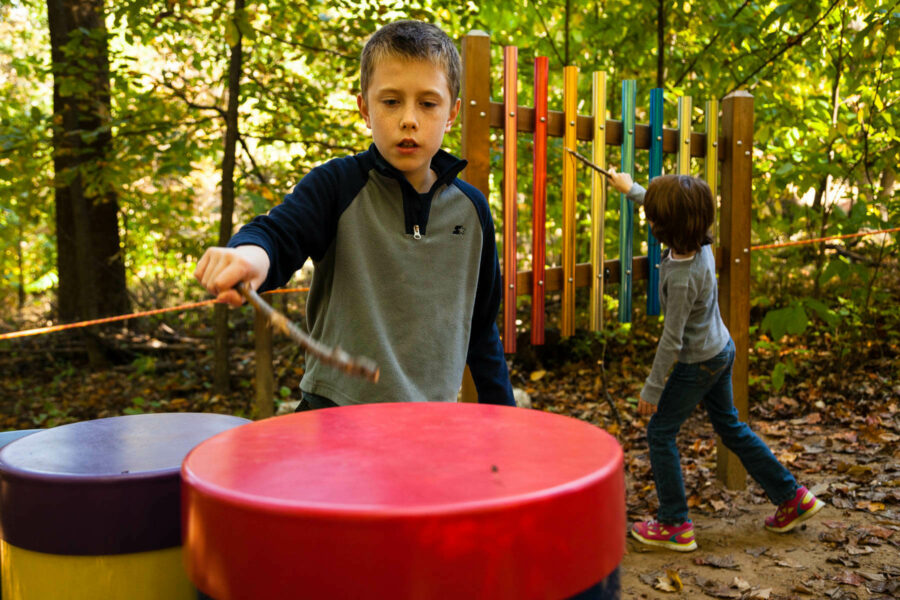All Sensory Trail makes for a more accessible park
Patapsco Valley State Park helps disabled persons connect to nature

Everyone deserves to experience nature. This was the belief behind the All Sensory Trail at Patapsco Valley State Park in Catonsville, Md., an innovative trail designed to help anyone and everyone connect to the outdoors.
“The point of an All Sensory Trail is to provide people with different levels of accessibility and help them access nature in creative ways,” said Fred Banks, program director for the Maryland Department of Natural Resources (DNR). “We wanted to take the smells, the sights and the sounds that are around us in nature all the time and put them in one place.”
Every detail of the trail has been carefully designed to encourage hikers to engage all of their senses. Visitors can walk up to raised planting boxes and take in the fragrant herbs and spices or use their fingers to make out the velvety leaves of the lamb’s ear plant. A guide rope leads visitors through the smooth, wheelchair-friendly trail, which forms a 0.1-mile loop. Bells along the trail alert hikers to nearby natural features, while Braille signage keeps them informed about their surroundings.
One of the trail’s most inventive features is its sound garden, a station full of large, brightly colored instruments where kids can beat on drums or tap on the scales of a larger-than-life xylophone. The project team also installed birdhouses throughout the garden, with the hope that a bluebird might stop by and contribute its own sound to the symphony.

From idea to action
The trail, which opened in 2014, is a collaboration between the Maryland DNR and the National Park Service. However, the idea for the trail came from an unexpected place: youths.
“We mostly were inspired by the kids we work with,” said Banks, who works alongside youths to provide them with local conservation and service opportunities. “One of our kids asked us, ‘Hey, do we have trails for people who can’t see?’ and things spiraled from there.”
Banks did some research and found that there was no such trail in Maryland. Led by his conviction that parks should be accessible to all, Banks consulted with experts from the Anne Arundel County Recreation and Parks to discuss the feasibility of pursuing such a project.
Over the next several months, Banks worked with over 100 experts and volunteers to design and build a trail that would be more universally accessible. Among the groups he worked with was the nearby Maryland School for the Blind. Banks consulted with staff from the school throughout the planning process, and invited students to field-test various components of the trail before opening it up to the general public.
Banks says that the trail has made the park a more inviting space. “When you talk about accessibility, you’re talking about a population that, at some point, we’re all going to belong to,” said Bank. “The improvements opened up the trail to not just people with disabilities, but people of different skill levels and ages.”
Banks says he hopes others appreciate the importance of making nature more accessible to those with disabilities. “Nature has a healing property—it makes us all feel better.”
Plan your visit to Patapsco Valley State Park.

Comments
There are no comments.
Thank you!
Your comment has been received. Before it can be published, the comment will be reviewed by our team to ensure it adheres with our rules of engagement.
Back to recent stories